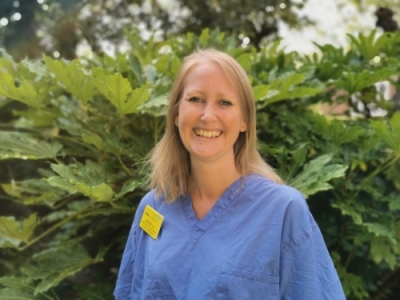18 July 2023
 Can lung ultrasound be used to measure the amount of air in the lungs (lung aeration) and help determine whether chest physiotherapy is useful in children after heart surgery? That’s what Jennie Balls, paediatric physiotherapist at Royal Brompton and Harefield hospitals, hopes to find out.
Can lung ultrasound be used to measure the amount of air in the lungs (lung aeration) and help determine whether chest physiotherapy is useful in children after heart surgery? That’s what Jennie Balls, paediatric physiotherapist at Royal Brompton and Harefield hospitals, hopes to find out.
Thanks to funding from the National Institute for Health and Care Research (NIHR), Jennie will be undertaking a doctoral clinical academic fellowship, which will see her run clinical observational studies in the paediatric intensive care unit at Royal Brompton hospital and complete a PhD.
Most impressively, there were 6 doctoral clinical academic fellowships granted to London-based applicants, 3 of which were to staff at Guy’s and St Thomas’ NHS Foundation Trust.
Heart surgery and chest physiotherapy
In the UK, approximately 13 babies a day are born with a heart defect and an operation is often required. Additionally, in 2020, over 16,000 children were admitted to a paediatric intensive care unit for complex care, which often includes the use of a ventilator.
Chest physiotherapy is part of routine care for these children, with physiotherapists using a range of techniques to help clear secretions from the lungs and re-expand areas that may be less inflated after surgery.
However, although research has shown that chest physiotherapy can help in some patients, in others it has been linked to worsening blood pressure, heart rate and oxygen levels.
Jennie said: “It is important for physiotherapists to measure the effect of their treatment and ensure benefit for the child. Unfortunately, there are currently no good ways to measure the effect of this treatment properly.”
The research
Studies in adults have shown that a lung ultrasound score may give useful measurements of change in lung aeration after undergoing chest physiotherapy.
Jennie plans to conduct two observational studies.
The first will evaluate whether a doctor and physiotherapist who do a lung ultrasound independently will score it the same, and whether this score is consistent when the scan is re-checked on a separate occasion.
Jennie explained, “This is important, because unless the results are consistent between the doctor and physiotherapists, they will not be useful.”
The second observational study aims to establish if the lung ultrasound score can detect a change in the amount of air in the lungs following chest physiotherapy and how this compares to changes in measurements that physiotherapists currently use, such as changes in measures of ventilation and oxygen levels.
In addition to the observational studies, Jennie also plans to interview physiotherapists across the country on how they measure the results of chest physiotherapy and whether they use lung ultrasound in their clinical practice.
Jennie was pleased that her application was successful. She said:
“I am extremely grateful to the NIHR for funding this fellowship and for the supervisory support from Professor Andrew Bush, Dr Tom Semple and Dr Ajay Desai here at the Royal Brompton Hospital and Dr Harriet Shannon at University College London.
“Lung ultrasound is a promising tool for physiotherapists to guide chest physiotherapy treatments and monitor the results. I am excited to start this project, in collaboration with parent representatives from the Brompton Fountain, and look forward to sharing the results.”
To find out more about our research, please contact us.
Read more of our research stories or sign up to our research newsletter.
